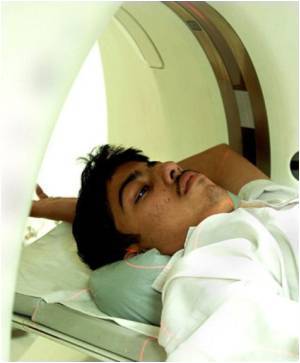Researchers at Queen Silvia Children's Hospital have developed a CT scanning that permits less radiation dosage for children.

The author of the thesis, medical physicist Kerstin Ledenius from the Department of Radiophysics at the Sahlgrenska Academy, has studied and tested a new method together with radiologists, nurses and medical physicists at the Queen Silvia Children's Hospital.
This method manages to combine the lowest possible dose of radiation with what radiologists consider to be sufficiently high image quality for correct diagnosis. In various studies, the research group also looked at the image quality of CT scans of the brains and stomachs of children in various age groups from birth to 17 years.
Computer manipulation of images from previous scans was used to simulate various reductions in radiation dose. The research group then assessed the results of the simulation and decided whether exposure to radiation should be adjusted for the next patient in the same situation, and if so by how much. This made it possible to find the lowest exposure capable of producing a sufficiently good image for each type of examination performed.
"Adjusting exposure is important, as a small patient does not need the same exposure as a large one," explains Ledenius. "Children also differ anatomically from adults, which affects the image quality needed."
The method is already in use at the Queen Silvia Children's Hospital, and Ledenius hopes that more hospitals will follow suit.
Advertisement
Source-ANI









